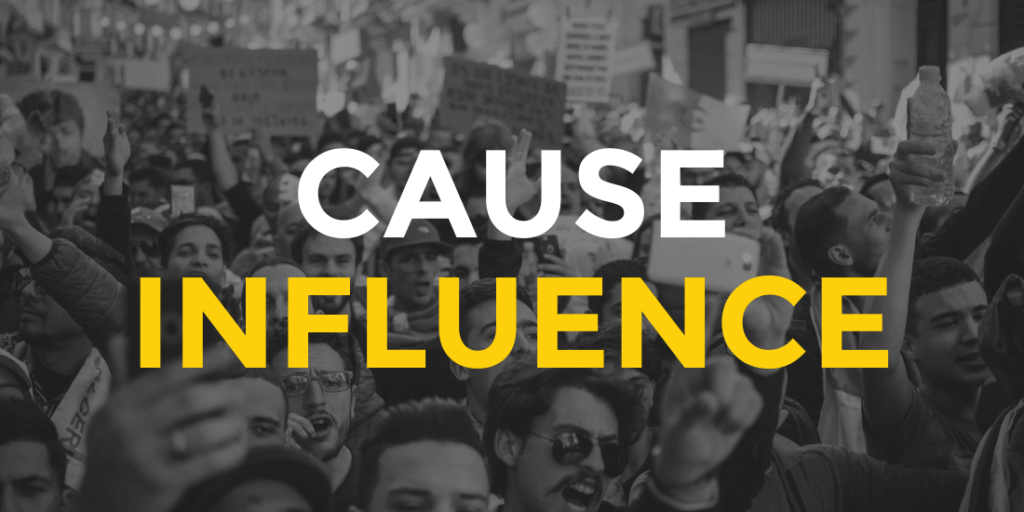For many marketing teams, developing their 2022 plans can easily turn into a copy, paste, and update minimally task. But at a time in the world when so much is changing, we’re encouraging people to rethink the status quo and explore how cause influence can help advance their social impact work.
Before we get into it, let’s level-set on what cause influence means
Cause influence is a growing area of marketing that leverages influence and those who wield it for positive social impact. As a strategy, it’s applicable to non-profit organizations as well as for-profit corporations engaging in commercial, cause marketing, and social impact campaigns. Think of influencer marketing where the goal is purpose-oriented, rather than profit-motivated.
With cause influence, it’s about the influence, not the influencer, per se. In other words, cause influence taps into the power and platform of any relevant and reputable public figure—be they a musician, celebrity, actor, athlete, lawmaker, activist, author, and, yes, a YouTube star—to raise awareness, facilitate conversations, shift opinions, and incite action around important social causes. For more on influencer types and levels, read this helpful guide.
Why cause influence is effective
Now that we’ve determined what it is, let’s get into how it works (and why we recommend it). Whether you’re a business or non-profit, the fact is that your target audiences are influenced by people other than whom they directly know on a personal level. Increasingly, your audiences look to those people (i.e. those influencers) for reliable information, recommendations, and endorsements. Research shows this is especially true of younger audiences who are skeptical of traditional marketing, but don’t mind being pitched by trusted celebrities and personalities.
It’s not too late
While that doesn’t mean that you should scrap your existing non-profit marketing campaign, it does mean that you should integrate the voices of public figures who hold the trust of your target audiences into that campaign. Is it possible to get an actor who possesses an authentic connection to your mission to participate? How about getting a well-known activist involved in your cause to share your content and point their audience to your social impact work? Incorporating influencers and celebrities who share an authentic connection with your cause is an effective way of extending the reach of your campaign, especially to new and younger audiences. That’s exactly what we did for the National Trust for Historic Preservation’s African American Cultural Heritage Fund for the non-profit’s campaign to restore and preserve the childhood home of Nina Simone, #SaveNinaCrib.
And, if you don’t have a pre-planned social impact campaign to plug public figures into, even better. Formulating the integration of cause influence at the outset can help organizations do well by doing good. For many non-profit marketers, that might mean developing more strategic, long-term relationships with relevant public figures as part of a broader ambassador program wherein influencers can engage more deeply to help anchor and shape future social impact campaigns. Whatever your situation, whether you’ve got an existing campaign or you’re starting from scratch, if you’re a non-profit or a brand with a purpose-driven social impact campaign, there are hundreds of ways to incorporate cause influence into your plans. Making cause influence a core strategy in 2022 is an economical and effective way of elevating your cause, increasing revenues, reaching new audiences, and growing your organization.
This post was written by Paul Katz.





